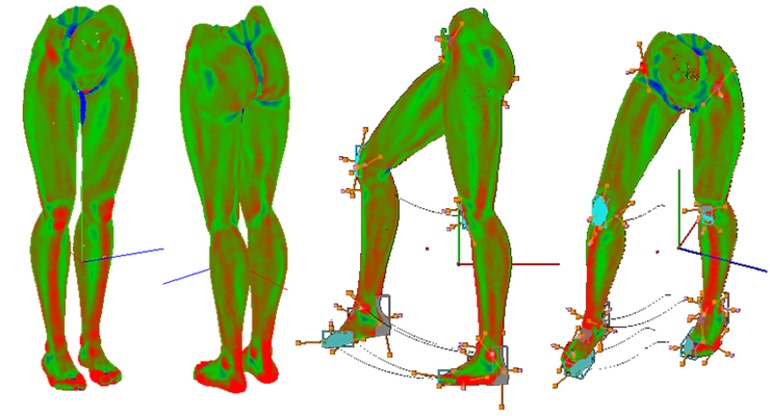AURORA

The main goal of Aurora project (Contact-free dynamical volumetric measurements of lower body with functional clinical and diagnostic capacity) was to research and develop a system for human skeletal movement reconstruction basing on measured shape of human lower limbs. At present, physicians and therapist have to perform very complicated examinations (very often harmful e.g. X-Rays) and analysis of human stature and gait in order to precisely identify any disease and/or pathological changes. Currently there are no tools or methods which could considerably help automate this analysis. There are also no methods for performing 4D (3D plus time) measurements of a human body.
Full skeletal and volumetric motion analysis method will be a brand new feature of this system. Laser triangulation along with fringe projection methods will be used for time dependent surface data. As only surface data are obtained, it will be necessary to develop algorithms for skeletal system reconstruction of selected body parts.
The main advantages of this system:
- completely noncontact measurement which does not expose patients to e.g. harmful x-ray radiation
- relatively low cost of dynamical and kinematical selected body parts reconstruction
- huge amount of data possible to obtain: volumes, surfaces, angles, distances etc.
- additional dynamic data: acceleration, speed etc.
Currently, a complex data analysis is performed only in highly specialized laboratories. This results from two reasons: the price of this kind of systems is very high and a well qualified and experienced stuff is required. Due to very time consuming preparations for measurements (marker motion capture technique is used), it is not applicable in a regular medical diagnostic. Therefore, the measurement which is based on light projection is a huge step forward. Actions needed to prepare a patient for an examination are reduced to a minimum. Measurement method is fast and noncontact, which is a very important for a patients comfort.
This kind of systems can be very useful in everyday use. Low costs allow to install this system in many medical laboratories. Without any doubts this system will have a huge impact on examinations and therapy quality.
The project was carried out within the European Commission 6th Framework Programme (COOP-CT-2003- 508203 / SME-2003-1-508203) in cooperation with:
- DIERS International GmbH
- Eberhard Karls Universität Tübingen
- Katholieke Universiteit Leuven
- Rimkevicius and Gintautas Company
- SMARTTECH Sp. z o.o.
- VELOMAT Messelektronik GmbH

